Figures & data
Table 1. Correlation between IL-17 and other analytes in each patient category.
Figure 1. Biochemical parameters of liver failure patients. (A) Time from onset to hospitalization and serum levels of (B) AST and ALT, (C) bilirubin, and (D) alkaline phosphatase were compared between patients with acute liver failure of different etiologies. Statistical significance between IDILI patients (n = 39) and other patient groups (APAP, n = 21; Hepatitis A and B, n = 5 each) was determined by the t-test with Welch’s correction; levels of significance are indicated in the figure.
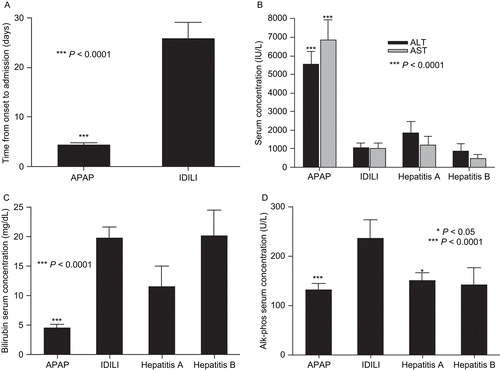
Figure 2. TH17-related cytokine/chemokine comparisons between patient groups. Serum concentrations of TH17-related cytokines/chemokines (e.g., IL-17, IL-21, IL-6, and IL-1α) were measured by Luminex using a human multiplex kit. The statistical significance of any differences between the APAP (n = 21) and IDILI (n = 39) patients’ values were determined by the t-test with Welch’s correction; levels of significance are indicated in the figure. Data from patients in the Hepatitis A, B, and C virus groups are shown for comparison (n = 5, 5, and 10, respectively).
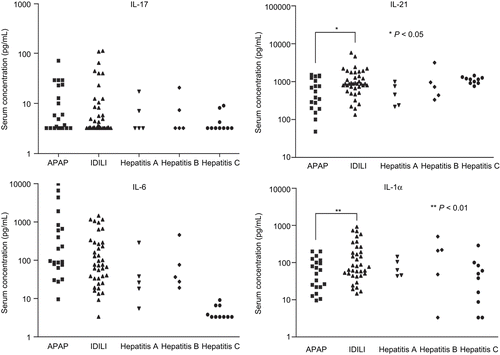
Figure 3. Innate cytokine/chemokine comparisons between patient groups. Serum concentrations of innate cytokines/chemokines (e.g., MCP-1, IL-15, IP-10, and IFNγ) were measured by Luminex using a human multiplex kit. The statistical significance of any differences between the APAP (n = 21) and IDILI (n = 39) patients’ values were determined by the t-test with Welch’s correction; levels of significance are indicated in the figure. Data from patients in the Hepatitis A, B, and C virus groups are shown for comparison (n = 5, 5, and 10, respectively).
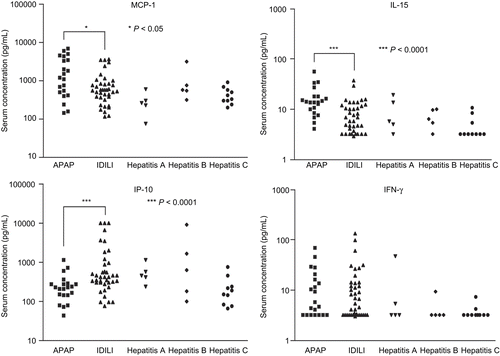
Figure 4. Serum levels of BAFF. Serum concentrations of BAFF were measured by ELISA. The statistical significance of any difference between the APAP (n = 21) and IDILI (n = 39) patients’ values was determined by the t-test with Welch’s correction by the t-test with Welch’s correction; level of significance is indicated in the figure.
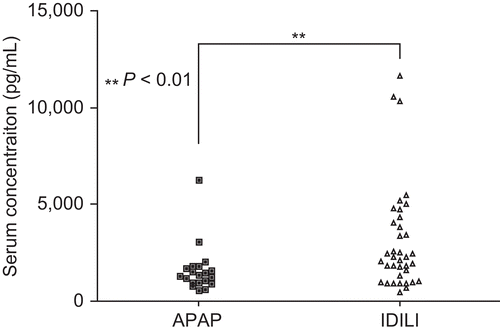
Figure 5. Serum levels of ANA. Serum levels of ANA were measured using an ELISA kit that detects 9 different anti-nuclear antibodies. Serum samples were diluted in 1:100 and the manufacturer indicates that values greater than 10 should be considered positive. The statistical significance of any difference between the APAP (n = 21) and IDILI (n = 39) patients’ values was determined by the t-test with Welch’s correction; level of significance is indicated in the figure. Data from patients in the Hepatitis A, B, and C virus groups are shown for comparison (n = 5, 5, and 10, respectively).
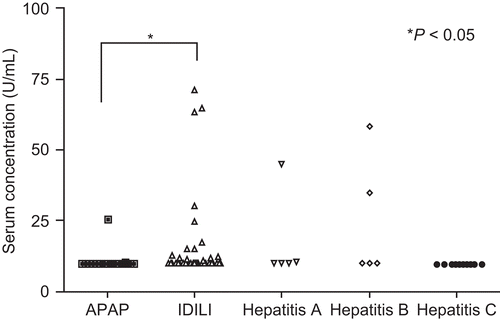
Figure 6. Serum levels of anti-MPO antibodies. Serum anti-MPO levels were determined (semi-quantitation) by an ELISA kit. Serum samples were diluted in 1:100. The statistical significance of any difference between the APAP (n = 21) and IDILI (n = 39) patients’ values was determined by the t-test with Welch’s correction; level of significance is indicated in the figure. Data from patients in the Hepatitis A, B, and C virus groups are shown for comparison (n = 5, 5, and 10, respectively).

Table 2. Levels of IL-17, IL-21, IL-6, IP-10 (Luminex assay), ANA, and anti-MPO (ELISA assay) in individual IDILI patients.
